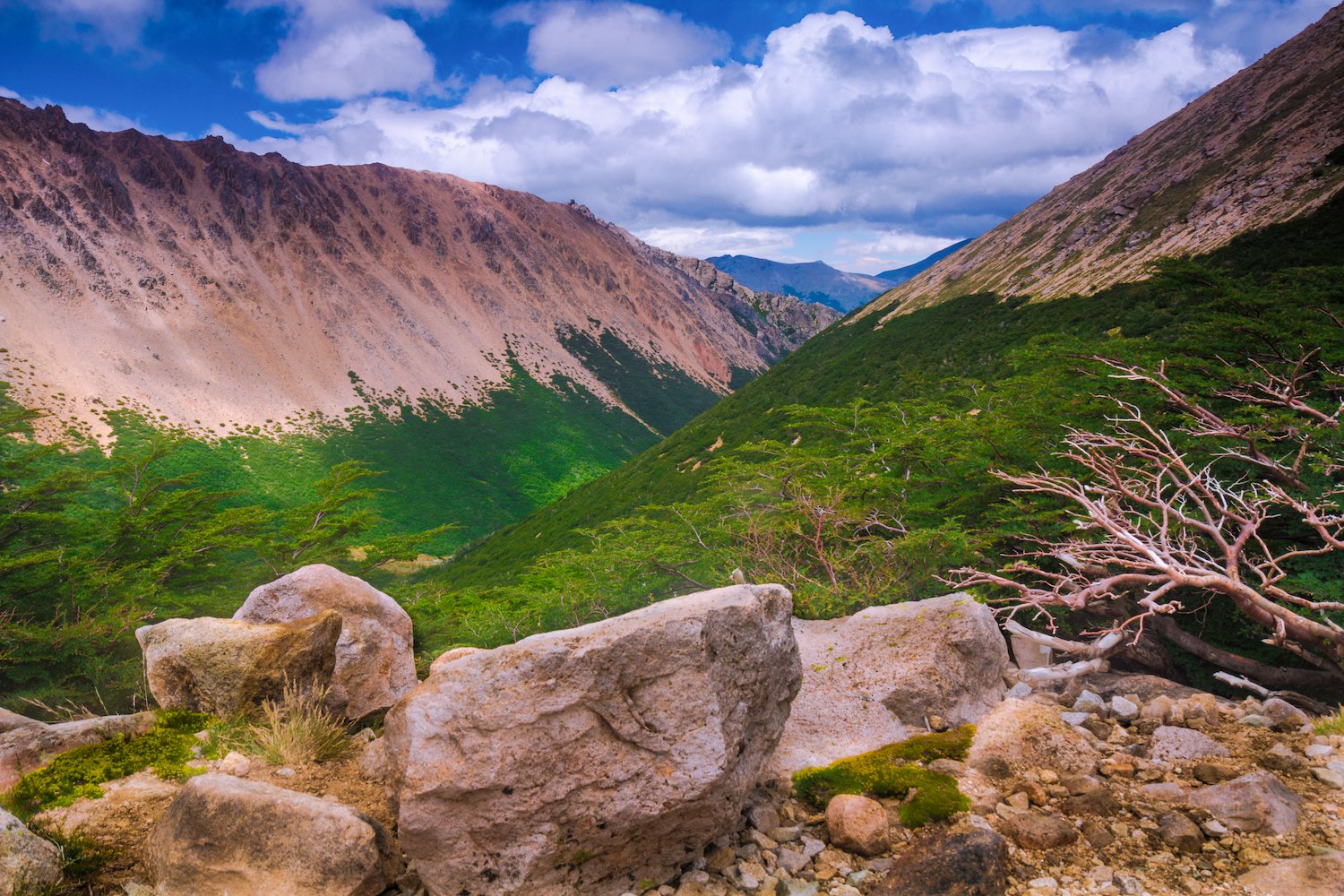Los Glaciares National Park
This magnificent park's name refers to the 47 glaciers that originate from the Southern Patagonian Ice Field, the largest ice cap outside of Antarctica, Greenland, and Iceland. Of these 47 glaciers, 13 flow directly into the Atlantic Ocean. The park is divided into northern and southern sections. The northern half includes part of Viedma Lake, the vast Viedma Glacier, several minor glaciers, and numerous mountains such as Mount Fitz Roy and Cerro Torre, which are very popular among climbers and trekkers. Fitz Roy is perhaps Argentina’s most recognizable peak.
The southern part also features several glaciers, including three major ones that flow into Argentino Lake: Perito Moreno Glacier, Upsala Glacier, and Spegazzini Glacier. Visitors must take a boat to visit Upsala and Spegazzini, as this is the only way to get up close to their massive faces. Perito Moreno may be the world’s most famous glacier, easily accessible from the town of El Calafate.
Monte Fitz Roy
Perito Moreno National Park
It’s difficult to think of a more iconic glacier than Perito Moreno. This 97-square-mile behemoth is nearly 20 miles in length and is active, experiencing episodes of growth and contraction while maintaining a steady size. The glacier is fed by the Southern Patagonia Ice Field, the world's second-largest contiguous extrapolar ice field, from the west in Chile. Watching massive blocks of ice calve off its face, thundering down into the lake, is an unforgettable experience. You can both hear and feel the power of nature in these consistent and frequent calving events.
The wall of the glacier is more than three miles wide and can reach heights of 240 feet above the water and nearly 600 feet below. On a cloudy day, the deep blue of the glacier, along with streaks of debris that the glacier carved from the land, makes for an amazing sight. Tall mountains hug the glacier, forcing its icy mass through the submerged fjord. It terminates at Lago Argentino, the biggest freshwater lake in Argentina.
Perito Moreno Glacier
Nahuel Huapi National Park
Nahuel Huapi National Park, Argentina’s oldest national park, serves as Bariloche’s gateway to the Andes. With its expansive views, the park is truly a national wonder. As its name implies, it primarily protects the huge Nahuel Huapi Lake and the peaks and forests surrounding its shores. The lake is speculated to be the home of “Nahuelito,” a mythical lake monster similar to the Loch Ness Monster, with stories dating back to the indigenous inhabitants who first occupied the area.
Several trails around the park cross into the mountains, including the popular climb up to Refugio Frey. This six-mile hike ends at the Refugio, which offers hikers' accommodation and a gorgeous view of Laguna Toncek. Several other hikes originating from Bariloche and elsewhere lead to stunning waterfalls, lakes, and mountain peaks.
Torres del Paine National Park
Perhaps Chile’s most famous national park (at least with backpackers and mountaineers!), Torres del Paine is known for its soaring mountains, bright blue icebergs that calve from glaciers, and golden pampas (grasslands) that shelter rare wildlife such as the llama-like guanacos. Some of its most iconic sites are the three granite towers from which the park takes its name and the horn-shaped peaks named Cuernos del Paine, which are some of the most expressive mountains in the world.
The park also contains the wonderful Grey Glacier (picture two), which can be seen at various points on the famous “W” trek and by kayaking to to reach its towering face.
Lake District, Chile
Though not technically part of Patagonia, the Lake District of Chile lies just north of the Patagonian border and boasts its own unique beauty. It is an area where active snow-capped volcanoes meet pale green lakes. The two volcanoes pictured, Osorno (picture one) and Villarrica (picture two), are some of the most majestic I’ve had the pleasure of photographing. The high rainfall and temperate climate throughout the region create endless miles of virgin and ancient forest, including Fitzroya (or Alerce trees), the largest tree species in South America and a cousin to the redwoods of North America.









